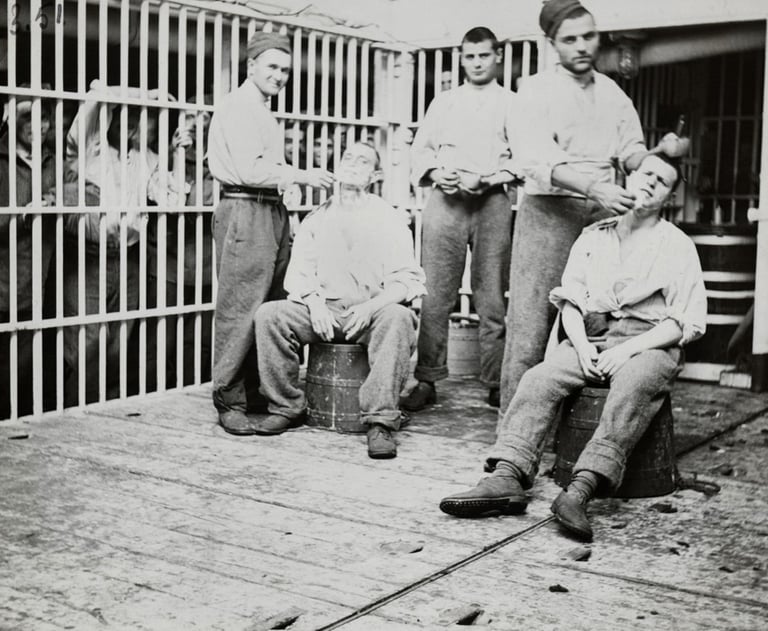Bathing
11/3/20241 min read


Léon Collin, Convicts being shaved on a transport bound for French Guiana, 1906-1910, Musée Nicéphore Niépce de Châlon-sur-Saône
At home, none of these men and women would have bathed every day and, given that the only water available (in such large quantities) was unheated seawater, and that bathing had to take place on the upper deck, it would have been impractical for them to go through the tubs while the ships were in colder climates.
On well-managed convict ships, the prisoners were obliged to wash their face and hands daily, but once they entered warmer waters, they would have a full bath twice a week, and on some ships, every day. The men were shaved by prisoners who could be trusted with razors, which were returned at the end of the day. They bathed in casks that had been cut down by the cooper. Marine soap, which is made from palm oil and lathers in salt water, was issued to the convict messes, two pounds per person per month, and this was used to wash their clothes as well.
Some of the convicts took pride in keeping themselves clean, and these men and women had to be watched to ensure they did not spend too long in the tubs. But ‘others would rot rather than take the trouble’ and had to be driven to bathe themselves with the threatened withdrawal of privileges. In some cases, the only option was to throw buckets of water over them as they stood unhappily on deck.
Contact us
Connect with us
Botany Baymen acknowledges the traditional custodians of country throughout Australia and respects their connection to land, water and community.
© Botany Baymen 2024. All rights reserved.
You may download, display, print and reproduce this content for your personal or non-commercial use but only in an unaltered form and with the copyright acknowledged.

